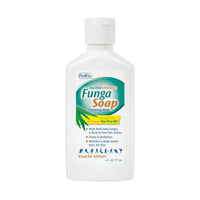Dry Skin
- Summary
- Symptoms
- Read More
Summary
Dry skin on the foot is the result of improper hydration, seasonal environmental dryness, lack of perspiration (dyshydrosis) or infections of the foot. The skin on the bottom of the foot is quite different from the skin on the top of the foot. As such, dry skin on the bottom of the foot and the top of the foot may represent different reasons for dry skin. Fungal infections of the foot are often mistaken for dry skin. Treatment of dry skin of the foot varies based upon the etiology of the dry skin.
Symptoms
- Peeling and scaling of the skin on the top or bottom of the foot
- Cracks in the skin that may be painful
- Periodic bleeding or drainage
Description
A discussion of dry skin of the foot can be broken down into two categories based upon the location of the dry skin. The location of the dry skin makes a difference in determining the reason why the skin is so dry. This chart summarizes some of the reasons for dry skin based upon the location on the foot.
| Top of the foot | Bottom of the foot |
|
|
Dry skin on the top of the foot is usually due to a change in the environment of the normal skin. Normal skin requires us to drink plenty of water each day, particularly in the winter. If we become dehydrated, the superficial layers of skin will begin to flake away (exfoliate) prematurely. We can contribute to this process by drying the foot with excessive soaking. For instance, Epsom Salts may be helpful in many foot conditions but repeated soaking will tend to strip away the natural oils found in the skin and dry the skin. That's why frequent soaking is discouraged in patients with diabetes or poor circulation.
Diabetic patients can see unique skin changes including dry skin. Dyshydrosis or loss of sweating is a common condition found in end-stage diabetes as a result of loss of function of the parasympathetic nervous system. Once a diabetic losses the ability to perspire, it’s all the more important to treat dry skin to prevent cracking. Cracking or fissures may allow bacteria to break through the skin, resulting in infection. It's important for all diabetics to learn and practice good diabetic foot care.
Many patients describe trying to treat dry skin by using over-the-counter skin moisturizing lotions with little to no success. That’s often due to the fact that the bottom of the foot is a common place for fungal infections. A chronic fungal infection, often called tinea rubrum, looks just like dry skin and often shows an erythematous (slightly red) base due to the inflammation caused by the fungus in the skin. Most importantly, when you see dry skin on the bottom of the foot, think fungus.
Causes and contributing factors
Causes and contributing factors to dry skin include seasonal dry skin, environmental factors, and excessive use of skin care products that dry the foot, e.g. alcohol and Epsom Salts. Contact allergies of the skin may also contribute to the appearance of dry skin.
Differential diagnosis
The differential diagnosis of dry skin includes:
Chronic athlete's foot
Contact dermatitis
Eczema
Psoriasis
Toe box dermatitis
Venous stasis dermatitis
Treatment
Not all dry skin responds to the same method of treatment. The treatment of dry skin hinges upon identification of the cause of the dry skin. Adequate hydration (fluid intake by mouth) is important. Control of perspiration (or lack of) and allowing ventilation in the shoe is critical. Topical hydrating creams vary in their components. Water-based creams act to restore moisture to the skin. Lanolin-based products are also a natural way to restore moisture to tough skin like cuticles. Petroleum-based products trap moisture and can be used to hydrate skin, but they also inhibit normal exfoliation.
Treating dry skin due to chronic tinea (fungus) requires a long-term treatment plan and ongoing treatment. It’s important to realize that fungus is a plant. If the plant is given an environment in which it can thrive, it’ll do just that,so it’s important to change the environment to become less conducive to the growth of fungus. You can do so by practicing the following tips:
- Use a drying agent on the feet to reduce perspiration.
- Rotate shoes to allow them to dry, never wearing shoes more than one day in a row.
- Change your socks twice daily.
- Use an antifungal soap every day.
- Use an antifungal cream every day.
- Use an an antifungal shoe spray on a monthly basis.
When to contact your doctor
Most cases of dry skin can be treated on an at-home basis. When home care fails to change the appearance of dry skin, a consult with your podiatrist, primary care doctor or dermatologist may be required.
References
References are pending.
Author(s) and date
![]() This article was written by Myfootshop.com medical advisor Jeffrey A. Oster, DPM.
This article was written by Myfootshop.com medical advisor Jeffrey A. Oster, DPM.
Competing Interests - None
Cite this article as: Oster, Jeffrey. Dry Skin. /blogs/articles/dry-skin
Most recent article update: December 10, 2020.
 Dry Skin by Myfootshop.com is licensed under a Creative Commons Attribution-NonCommercial 3.0 Unported License.
Dry Skin by Myfootshop.com is licensed under a Creative Commons Attribution-NonCommercial 3.0 Unported License.

